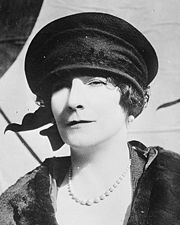
Michael Arranstoun is pursued by a gold-digging woman named Mrs. Hatfield. Her husband is on his deathbed, she wrote in a letter, and soon he will be gone and the two of them can be married when he finally does leave this mortal coil. Michael, of course, wants no such thing. She finds her objectionable to say the least and cold-hearted as well. Her husband is not yet dead and she already plots to marry someone else. She is very conniving and Michael fears what she will do in order to entrap him. Sabine Delburg is supposed to marry Mr. Greenback, a horrid man. Needless to say, she does not wish to do this. While on tour in the castle that Michael owns, she escapes through a door and by amusing circumstances, she comes face to face with Michael himself. But instead of turning her away at once, he begins conversing with her and discovers that her fate is similar to his own. And before Sabine can finish the delicious chocolate cake brought in by the servants, Michael has already formulated a plan. They shall marry each other! A strict marriage of convenience that would solve both their problems. But is this solution more trouble than it's worth? Elinor Glyn was a noted twentieth century author, best known for coining the term 'It' - for, well, sex appeal. Her novels in their day were also considered racy - though by modern standards, they're tame enough. She was also the author of the famous novel 'Three Weeks'.
Author

Elinor Sutherland was born in St Helier, Jersey, the younger daughter of Douglas Sutherland (1838–1865), a civil engineer of Scottish descent, and his wife Elinor Saunders (1841–1937). Her father died when Elinor was two months old and her mother returned to the parental home in Guelph, Ontario, Canada with her two daughters, Lucy Christiana and Elinor. Back in Canada, Elinor was schooled by her grandmother, Lucy Anne Saunders, in the ways of upper-class society. This early training not only gave her an entrée into aristocratic circles on her return to Europe, but it led to her being considered an authority on style and breeding when she worked in Hollywood in the 1920s. Her mother remarried a Mr. Kennedy in 1871 and when Elinor was eight years old the family returned to Jersey. When there her schooling continued at home with a succession of governesses. Elinor married Clayton Louis Glyn (1857–1915), a wealthy but spendthrift landowner, on 27 April 1892. The couple had two daughters, Margot and Juliet, but the marriage apparently foundered on mutual incompatibility although the couple remained together. As a consequence Elinor had affairs with a succession of British aristocrats and some of her books are supposedly based on her various affairs, such as 'Three Weeks' (1907), allegedly inspired by her affair with Lord Alistair Innes Ker. That affair caused quite a furore and scandalized Edwardian society and one of the scenes in the book had one unnamed poet writing, Would you like to sin With Elinor Glyn On a tiger skin? Or would you prefer To err with her On some other fur? She had began her writing in 1900, starting with a book based on letters to her mother, 'The Visits of Elizabeth'. And thereafter she more or less wrote one book each year to keep the wolf from the door, as her husband was debt-ridden from 1908, and also to keep up her standard of living. After several years of illness her husband died in 1915. Early in her writing career she was recognised as one of the pioneers of what could be called erotic fiction, although not by modern-day standards, and she coined the use of the world 'It' to mean at the time sex-appeal and she helped to make Clara Bow a star by the use of the sobriquet for her of 'The It Girl'. On the strength of her reputation and success she moved to Hollywood in 1920 and in 1921 was featured as one of the famous personalities in a Ralph Barton cartoon drawn especially for 'Vanity Fair' magazine. A number of her books were made into films, most notably 'Beyond the Rocks' (1906), which starred Rudolph Valentino and Gloria Swanson, and she was a scriptwriter for the silent movie industry, working for both MGM and Paramount Pictures in the mid-1920s. In addition she also had a brief career as one of the earliest female directors. In 1927, by which time she had published 32 novels, she once again appeared in some verse of the day. Songsmith Lorenz Hart immortalised her in his song 'My Heart Stood Still' when he wrote, I read my Plato Love, I thought a sin But since your kiss I'm reading missus Glyn! She was so universally popular and well-known in the 1920s that she even made a cameo appearance as herself in the 1928 film 'Show People'. As well as her novels, she wrote wrote magazine articles for the Hearst Press giving advice on 'how to keep your man' and also giving health and beauty tips. In 1922 she published 'The Elinor Glyn System of Writing', which gives an insight into writing for Hollywood studios and magazine editors. In later life she moved to the United Kingdom, settling in London. She wrote over 40 books, the last of which was 'The Third Eye' (1940) and she died in Chelsea on 23 September 1943, being survived by her two daughters. Gerry Wolstenholme November 2010